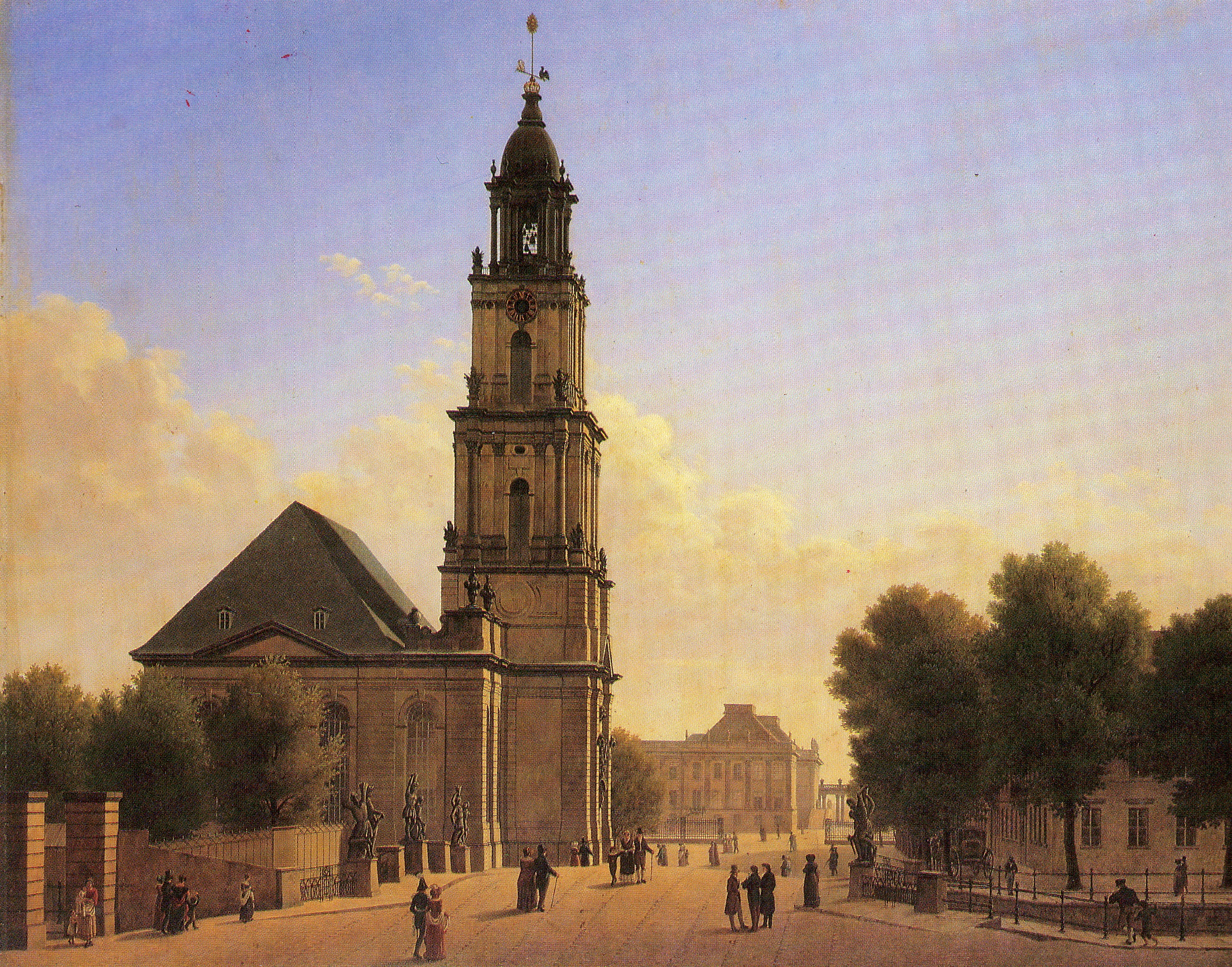 |
| Painting of Potsdam's Garnisonkirche in the 1820s |
Originally, this church was called the Heilig-Kreuz-Kirche (Church of the Holy Cross), and it might have been a less controversial subject, had it stayed that way. In its military context the church became Preussens Herz, the heart of Prussia. J.S. Bach came to play its organ, the organ pipes being at the church's focal point, directly above the pulpit. Beneath the pulpit was the altar and beneath the altar a throne. Built in the 1730s, this was the parish church of the Kings of Prussia, beginning with Friedrich the 1st and 2nd (Frederic the Great). The latter wasn't religious and didn't wish to be buried in the church like his father, but he was, and before long, the crypt containing their tombs had become a place of pilgrimage. In 1806, Napoleon made a point of visiting it.
In the 19th and early 20th centuries the Garnisonkirche at the centre of Potsdam became the "anchor" of Prussian identity and imperialism, eventually––unfortunately––standing as a symbol of the Nazi régime also. Die Kirche wurde wegen seiner Geschichte gehasst, because of its history the church was hated, explained our speaker, aber ein Gebäude kann nichts dafür, was in ihm geschieht. The building itself couldn't help what happened in it. In the film we saw footage of the eager young men setting off for the 1st World War, with their church in the background, cheered on by the crowds. When they came back defeated in 1918 everything was different and Potsdam became a sort of Museumsdorf, a reminder of happier days. Then came a Day of Hope, however, when Hindenburg, after the burning down of the Reichstag in Berlin, moved his parliament to Potsdam. It was March 21st, 1933, and on that day, much was made of the fact that Hindenburg shook hands with Hitler in front of the church, with a hundred thousand spectators on the streets. A Rebirth of the Nation, they called it.
 |
| Remains of the Garnisonkirche, 1945 |
All things are transient, and now the Rechenzentrum itself is being moved elsewhere (at a cost of €60 million), which gives an opportunity for the Garnisonkirche to rise from its ashes once again; the proponents of this project consider it equivalent to Dresden's Frauenkirche and want the resurrected church tower to become a symbol not of imperialism or Nazism but of reconciliation.
Some of our German conversation group signed a petition to support them.

No comments:
Post a Comment